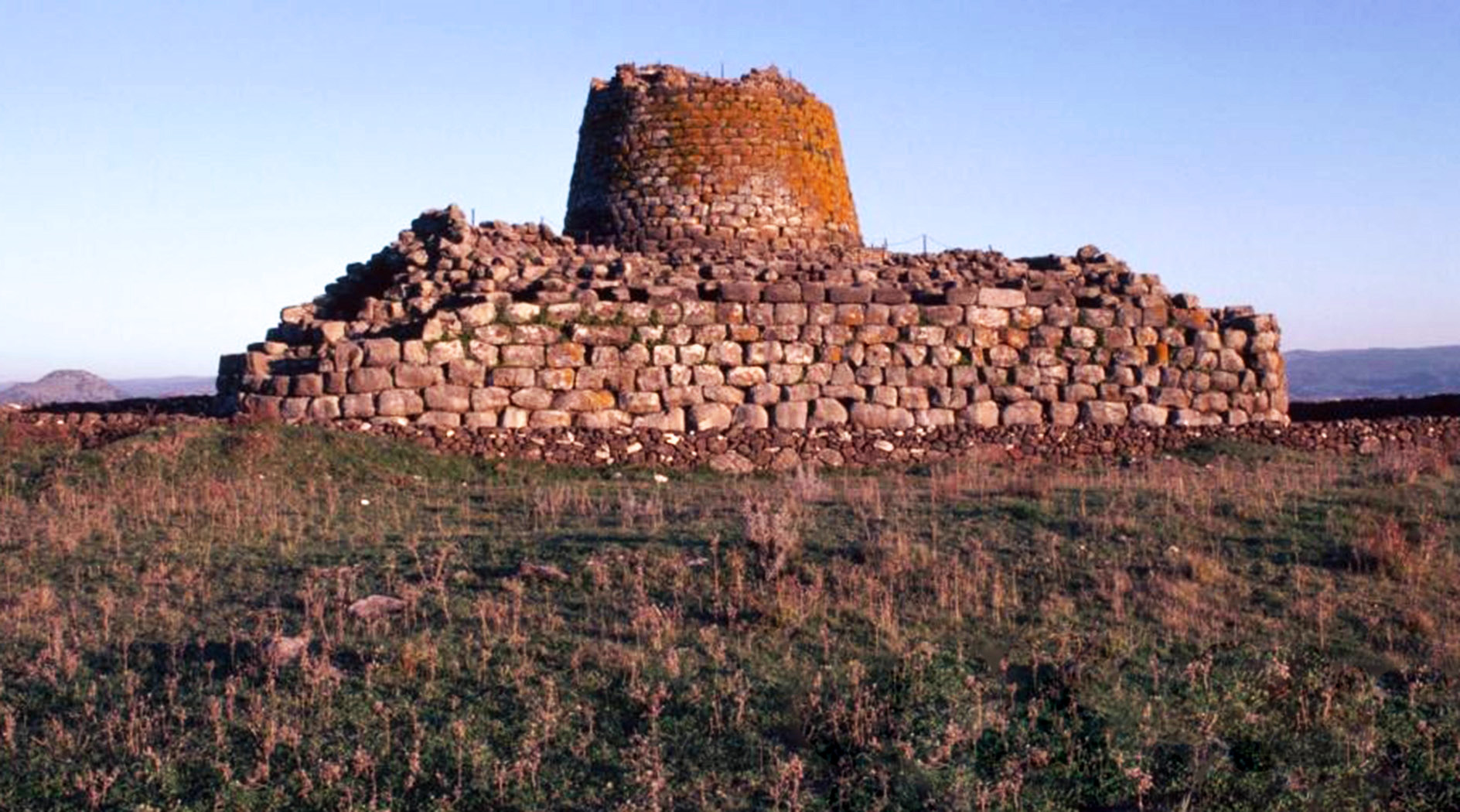The Province of Sassari is located in northwestern Sardinia. It overlooks the Sardinian Sea and borders the Province of Olbia-Tempio in the east. The province includes some of the most beautiful tourist resorts on the island, including Castelsardo, Alghero and Stintino, in addition to the Island of Asinara. It also includes Lake Baratz, Sardinia’s only natural lake. The beautiful coast is made up of long stretches of beaches, some rocky and some sandy, while inland lies the territory called Logudoro, characterized by a hilly and mountainous landscape.
One of the most important monuments in Sassari is the Fontana del Rosello, built in the Late Renaissance style between 1603 and 1606 by Genoese craftsmen to tap into the natural source of water in the area. As many as 300 water bearers would line up to then carry water to the homes in Sassari. Also worth seeing is the Cathedral of St. Nicholas, erected in the 13th Century. Originally constructed in the Romanesque style, it was later rebuilt as Gothic and even later had a Baroque façade added. While visiting antiquities, the Palazzo Ducale is a historic 18th century limestone palace built for the Duke of Vallombrosa. But except for its first 75 years, it has been the seat of the municipal government.
Moving towards the sea from Sassari is Porto Torres on the Gulf of Asinara. In addition to Porto Torres’ charming historic center, the Basilica di San Gavino is one of the oldest and most important examples of Pisan Romanesque architecture on the island and Terme Pallottino, which has mosaic floors that date back to the Roman Empire. To the northwest of Porto Torres, near the end of the small peninsula, is the picturesque village of Stintino, a former fishing village, with beautiful waters allowing it to transform into a popular resort with golden beaches and crystalline sea.
Descending along the coast towards the south is the promontory of Capo Caccia and the enchanting Bay of Porto Conte. In the western part of Capo Caccia, overlooking the sea, the Escala del Cabirol (goat’s steps) comprises 654 steps carved into the rock wall and leading to the Grotta di Nettuno. The entrance to the grotto lies only three feet above the sea level and can only be visited when the waters are calm. Two other grottoes lie nearby, the Grotta di Verde, which is not open to tourists and the Grotta di Ricami, which is only accessible from the sea. The combined length of the cave system is estimated to be about two miles, but only a few hundred yards are accessible to the public.
By continuing along the coast, you will reach the beautiful town of Alghero. The ancient towers that once surrounded the entire village today number only seven, but other ancient fortifications of the town still exist. In the center is the medieval piazza Plàia Civica and the Cathedral of Santa Maria, begun in 1570 and opened two decades later. Equally-striking is the town of Castelsardo, one of the most interesting in Sardinia. It is located northeast of Sassari, on the opposite side of the Stintino Promontory from Alghero. Strolling through the historical center of Castelsardo you can admire the town’s medieval Castello dei Doria, which hosts the Museo dell’Intreccio Mediterraneo, a museum dedicated to basket weaving. Visitors often shop for local handcrafts along the town’s ancient streets, but those in the know will head to the small lanes and alleys in town, where women will sit outside tiny shops weaving baskets of far superior quality than you’ll find in the souvenir shops. The town is also known for its Elephant Rock, a natural formation that has the appearance of a primordial pachyderm.
In the southeast of Sassari, the town of Ozieri contains the church and convent of Saint Francis, the Archaeological Museum and the interesting ruins of the Castle of Goceano. Be sure to see the Nuragic Palace of Santu Antine, one of the greatest and most famous Nuragic structures in Sardinia.
Some of Sardinia’s most beautiful beaches lie in the Province of Sassari. La Pelosa Beach in Stintino has crystal-clear waters and is sheltered by the Isola Piana. Also quite nice are the beaches of Lido San Giovanni and of the Bombarde in Alghero; the Balai beach in Porto Torres and that of Lu Bagnu, next to Castelsardo.
Plenty of festivals and events enliven the Province of Sassari. Among these, the Cavalcata Sarda kicks off summer on the island. For the occasion, people of all ages parade through the city in traditional costumes, some on foot, while others ride horses.
As beautiful as Sassari is, it is surpassed by the coastline of the Province of Olbia-Tempio. Although the land contains different environments ranging from hills and mountains to plains and even desert areas, it is the coast that is breathtaking.
In 1962, the Arab Prince Aga Khan IV decided to embark on an extraordinary tourist and real estate project to take advantage of the natural beauty of the area. This led to the development of the paradise known as Costa Smeralda. The name refers to the beautiful emerald green and turquoise shades of the sea. Today, this part of Sardinia is one of the most exclusive destinations in the world. With white sand beaches, golf clubs, private jet facilities, a world-class marina and exclusive hotels, the area draws celebrities, industrial tycoons and other affluent visitors. Tawny shops and high-end restaurants dot the towns, where the sea air smells of money. Costa Smeralda is the most expensive location in all of Europe, with the prices of homes reaching up to $40,000 per square foot!
The heart of the Costa Smeralda is Porto Cervo, nestled in a secluded cove, it offers exquisite accommodations, in addition to a well-equipped marina with space for over 700 boats. Life in Porto Cervo revolves around its piazzetta and the Church of Stella Maris. The other main towns and villages in the area are Liscia di Vacca, Capriccioli and Romazzino. Each September the Sardinia Cup, a sailing regatta, is held off the coast.
For those who are not quite as wealthy, the province offers some of the most beautiful beaches in all of Italy, such as Liscia Ruja, the small beaches of Punta Capriccioli, the Principe and Romazzino Beaches.
In the Bay of Olbia lies the Island of Tavolara, a huge slab of limestone that remains in pristine condition. It is one of the busiest summer destinations in all of Sardinia. Since 1991, in mid-July, the island becomes the host of a summer film festival. One of the most beautiful and intimate settings in the world for such an event, it draws thousands who dive and swim during the day and pull up a beach chair to watch films at night.
Moving inland from Olbia, one arrives in Arzachena, a town that has experienced extraordinary success and development during the last half century. The area features many archaeological sites of great interest, such as the Lu Coddhu ‘Ecchiuj and Li Lolghi (giant funeral monuments), the Li Muri Necropolis, the temple of Malchittu and the Ladas Dolmen, a monument from the 3rd millennium BC. Polo matches are held between April and October at Gershan near Arzachena.
Heading north past the exclusive village of Porto Rafael, you will arrive in Santa Teresa di Gallura, the point on the island closest to Corsica. At Capo Testa, there is a massive granite promontory connected to the mainland by a narrow isthmus. Here you will find Valle della Luna, an almost-desolate terrain characterized by granite rocks, naturally-eroded into animal-like shapes.
Lastly, the spectacular La Maddalena Archipelago is composed of a group of granite islands. It is one of the most breathtaking spots of the entire Mediterranean basin. In addition to the natural wonders, the Archipelago is famous for the National Garibaldi Museum on the island of Caprera. The hero of the Risorgimento, Giuseppe Garibaldi (1807-1882) spent the last years of his life on this island. He bought some land and built a house and accompanying structures. The estate has been used as a museum since his death.





